The East Coast Claims Spike and Its Fallout
In recent months, significant weather events across Australia’s East Coast have triggered a surge in water damage claims. Insurers and claims professionals are now grappling with a flood of overly technical reports. A common sentiment being echoed is:
“We’re drowning in technical reports our team doesn’t fully understand, but we’re expected to make coverage and cost decisions based on them.”
Even outside of peak periods, claims teams often feel “behind” simply due to the complexity of these initial reports.
What Are Technical Reports—and Why Do They Matter?
These reports are typically submitted by mitigation companies or builders following their first site visit. They are meant to inform insurers of the situation, but often focus heavily on technical data (e.g. moisture readings, psychrometrics, equipment used), while burying the most important decision-making information.
The situation worsens during peak claim periods when providers subcontract to other companies, creating layers of communication and inconsistency.

What Claims Teams Actually Need
In the critical first 24–48 hours after a claim is lodged, claims teams need three key things:
- Immediate decisions – What action is required now?
- Cost and timeline implications – What will the decision mean?
- Risk trade-offs – What are the consequences of choosing one option over another?
While technical data is important, it should support—not overshadow—the clear proposal for next steps.
Challenges for Claims Teams When Reporting Is Fragmented
Operational Delays:
- Reports get escalated due to lack of clarity.
- Claims stall while clarification is sought.
- Decision-making becomes inconsistent.
Team Challenges:
- Junior staff avoid water claims.
- Seniors become bottlenecks.
- Trust in vendors declines.
Business Impacts:
- Longer claim cycles.
- Poor cost control.
- Coverage disputes.
- Damaged vendor relationships.
Solutions for a Smarter Reporting Framework
- Report Restructure: Work with service providers to redesign the report format based on your team’s actual needs. Ensure it’s clear, concise, and actionable.
- Tiered Reporting: Segment reports by claim complexity.
- Level 1: Simple summaries for straightforward claims
- Level 2: Standard detail for moderate complexity
- Level 3: Comprehensive reports for complex losses
- Tech Integration: Create a rules-based framework where service providers can feed site data directly into your claims system, driving consistency and speeding up decision-making.
Taking Control of the Process
Insurers have the power to shape how they receive information. By actively managing reporting standards and collaborating with supply panels, claims teams can simplify complexity, speed up resolutions, and improve both internal KPIs and customer outcomes.
